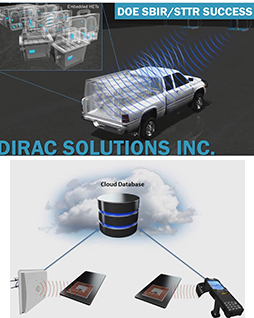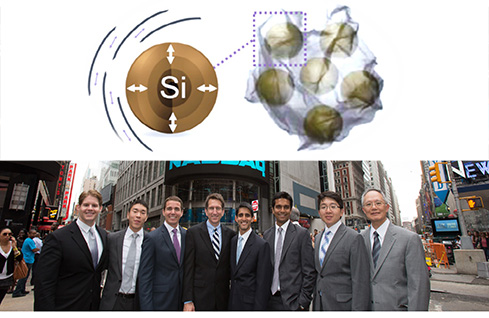A Safer Replacement for Highly Flammable Liquids Currently Used in Li-ion Batteries
NEI replaced liquid with solid material that allows for a no-liquid battery.

R&D Opportunity
While rechargeable lithium-ion batteries are attractive energy storage systems due to their relatively high energy (≥200 Wh/kg) and power (1500 W/l) densities, the unfavorable side reactions between the electrodes and the liquid electrolyte harm the performance in terms of capacity, life cycle, and safety. Reactions at the cathode-electrolyte interface pose a serious safety threat due to electrolyte decomposition and the formation of gaseous products within the cell. In addition, the growth of lithium dendrite on the anode can cause a cell to short circuit, which can lead to a fire or even explosion. In FY 2008, through the SBIR Program, the U.S. Department of Energy Office of Basic Energy Sciences funded the development of a solid state electrolyte for lithium-ion chemistries as a safer alternative to liquid electrolytes.
Solution
One way to circumvent inherent flammability issues in lithium-ion batteries is to develop an all-solid battery, where both the electrodes (cathode and anode) and the separator are composed of a solid electrolyte, which conducts the lithium ions. This eliminates the need for a liquid electrolyte. However, solid electrolytes with a high lithium-ion conductivity (10-3 S/cm) at room temperature that could be incorporated into a battery were not commercially available. The lack of these difficult-to-produce materials plagued all-solid Li-ion batteries.
NEI developed a process to commercially produce lithium tin phosphorous sulfide (LSPS). This material belongs to a family of “superionic” solids that are extremely conductive for lithium ions at room temperature. Since development, LSPS powder has been supplied to dozens of industrial corporations (automotive, electronics, oil & gas), as well as academic and research institutes. Recently, NEI introduced LSPS in the form of a slurry (dispersion) that can readily be cast into films and tapes and provides more options for cell designers to combine the electrolyte with suitable cathode and anode materials.
Impact
An all-solid lithium-ion battery architecture, based on the solid electrolyte developed at NEI, will lead to safer, high-energy batteries that are needed for consumer and industrial applications. These applications include hybrid electric vehicles and electric vehicles, portable consumer customer electronics (laptops, tablets, digital cameras, smart phones, etc.), renewable energy technologies (solar and wind energy) that use electrochemical storage, and power tools.
Contact
G. Skandan, NEI Corporation
gskandan@neicorporation.com
Related Links
Highlight Categories
Program: SC-BES



